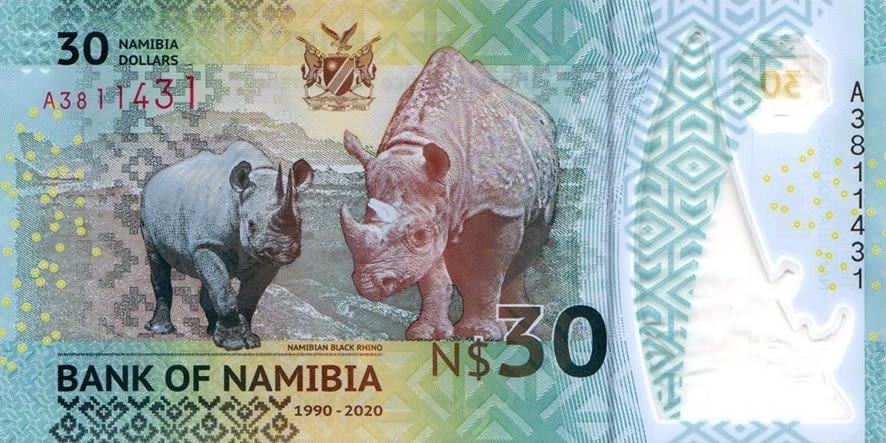The black rhino is a species that, despite its name, sports a greyish skin rather than black. This magnificent creature is distinguished from its cousin, the white rhinoceros, not just by color but by temperament and physical features. Notably, the black rhino has a reputation for being more aggressive. It is easily recognized by its pointed, prehensile upper lip, an adaptation that enables it to grasp leaves and twigs from bushes and trees – a dietary habit that contrasts with the white rhino’s preference for grazing on grass.
Historically, the black rhino was widespread across the southern and eastern African savannas, but the 20th century saw a catastrophic decline in their numbers. By the early 1990s, rampant poaching driven by the demand for rhino horn had decimated their populations from over 100,000 at the beginning of the century to a mere 2,300 individuals. This drastic reduction threatened the species with extinction and represented a significant loss of biodiversity, impacting ecosystems where they once played a critical role in shaping the landscape and supporting other species.
Efforts to reverse the decline of the black rhino have been underway for decades, focusing on increased protection through anti-poaching initiatives and improved biological management, including habitat restoration and protected areas. These concerted conservation efforts have yielded positive results, with the population recovering to around 5,000 individuals by 2020. However, the species remains critically endangered, with more than 98% of its historic range lost to human activities such as agriculture, urban development, and mining. This habitat loss has not only reduced the available space for rhinos to live and breed. Still, it has also led to a staggering loss of 69% of their mitochondrial genetic variation, which could have long-term implications for the species’ adaptability and survival.
Distribution
 Angola
Angola Benin
Benin Official estimate
Official estimate
 Botswana
Botswana Burkina Faso
Burkina Faso Official estimate
Official estimate
 Cameroon
Cameroon Official estimate
Official estimate
 Central Af. Rep.
Central Af. Rep. Official estimate
Official estimate
 Chad
Chad Official estimate
Official estimate
 DR Congo (Kinshasa)
DR Congo (Kinshasa) Official estimate
Official estimate
 Eritrea
Eritrea Official estimate
Official estimate
 Eswatini
Eswatini Official estimate
Official estimate
 Ethiopia
Ethiopia Official estimate
Official estimate
 Kenya
Kenya Official estimate
Official estimate
 Malawi
Malawi Official estimate
Official estimate
 Mozambique
Mozambique Namibia
Namibia Official estimate
Official estimate
 Niger
Niger Official estimate
Official estimate
 Nigeria
Nigeria Official estimate
Official estimate
 Rwanda
Rwanda Somalia
Somalia Official estimate
Official estimate
 South Africa
South Africa Official estimate
Official estimate
 South Sudan
South Sudan Official estimate
Official estimate
 Sudan
Sudan Official estimate
Official estimate
 Tanzania
Tanzania Official estimate
Official estimate
 Togo
Togo Official estimate
Official estimate
 Uganda
Uganda Official estimate
Official estimate
 Zambia
Zambia Zimbabwe
ZimbabweRecent updates
March 2024: A baby eastern black rhino has been born in Kenya. Estimated to be 6 months old, the calf was found in the Chyulu Hills in southern Kenya. This birth is rare, as the local rhino population consists of only about eight individuals.
Feb 2024: Twenty-one critically endangered black rhinos have been relocated to Loisaba Conservancy in northern Kenya, marking their return for the first time since 1976. The rhinos were moved and released into a fenced sanctuary over three weeks.
Feb 2023: Botswana’s Tourism Minister Philda Kereng announced that poaching of rhinos has significantly increased due to a higher demand for rhino horns in international markets, especially in Asia.
Jan 2023: Namibia Ministry of Environment expressed its concern about the poaching of rhinos considering the fact that they have recorded 87 rhinos poached in 2022. Conservationists are warning that poachers looking to supply rhino horns to Asian markets are turning their sights to Namibia’s commercial farms. Namibia has an estimated 800 white rhinos and 1,800 black rhinos.
Did you know?
- Four range states—South Africa, Namibia, Kenya, and Zimbabwe—are home to the vast majority (94%) of black rhinos.
- They are browsers, meaning they primarily consume plants and trees for food. They pluck leaves and fruit from the branches with their pointed upper lip as there are no front teeth.
- Were once believed to be mostly solitary; however scientists suggest it as a misconception.
- They are mud-wallowers, which is the reason they may appear black!
- Mom and baby stick together! It takes their calf until it is roughly three years old before it can live on its own.
- Males fight viciously, stabbing each other with their horns. They will also chase off animals and humans to scare them away.
- Critically Endangered species shouldn’t be trophy hunted, especially when facing ongoing and increasing threats and have extremely low population rate. No levels of hunting offtake can be deemed sustainable for such species. Yet, some countries are increasing their trophy hunting quotas for black rhinos.
Anything we've missed?
Help us improve this page by suggesting edits. Glory never dies!
Suggest an editGet to know me
Terrestrial / Aquatic
Altricial / Precocial
Polygamous / Monogamous
Dimorphic (size) / Monomorphic
Active: Diurnal / Nocturnal
Social behavior: Solitary / Pack / Herd
Diet: Carnivore / Herbivore / Omnivore / Piscivorous / Insectivore
Migratory: Yes / No
Domesticated: Yes / No
Dangerous: Yes / No
Black rhino on banknotes









